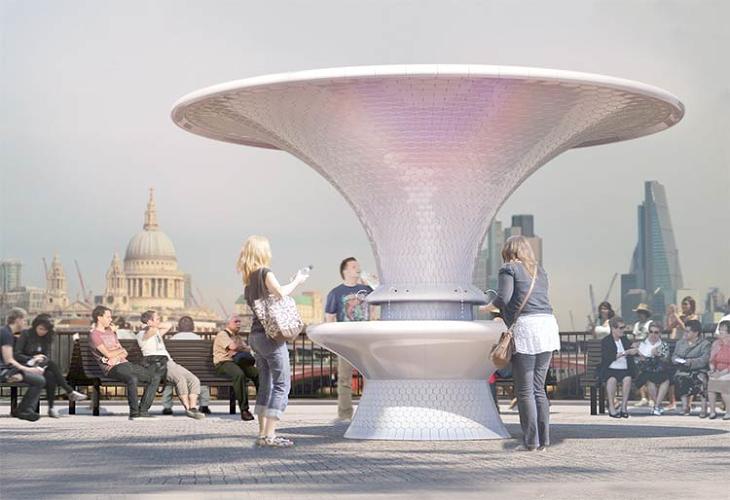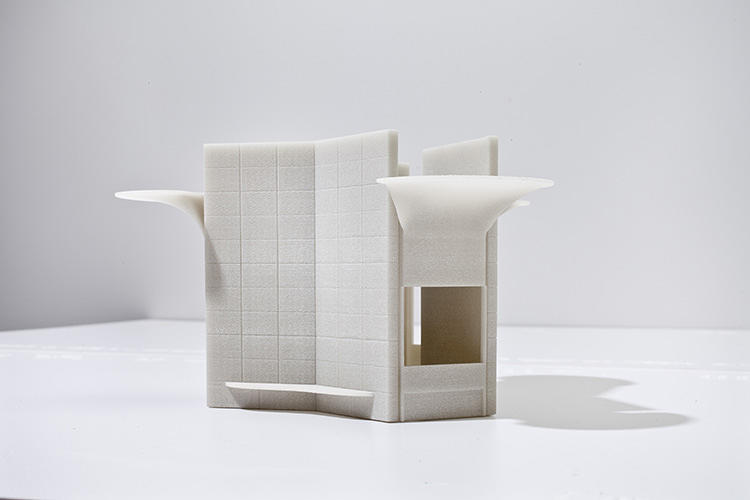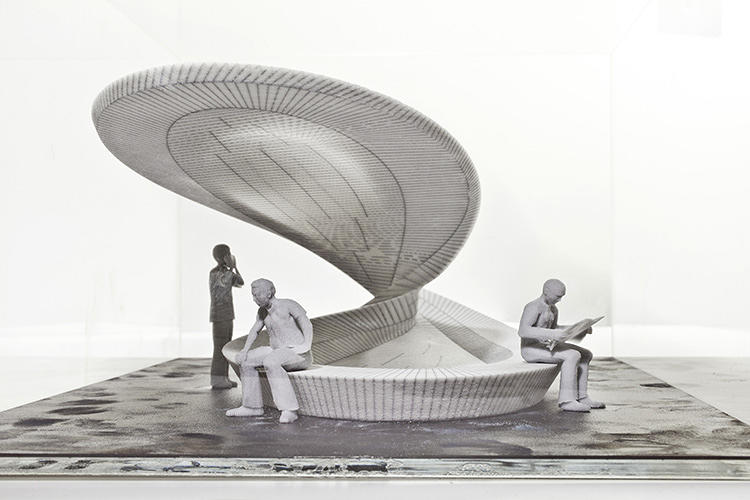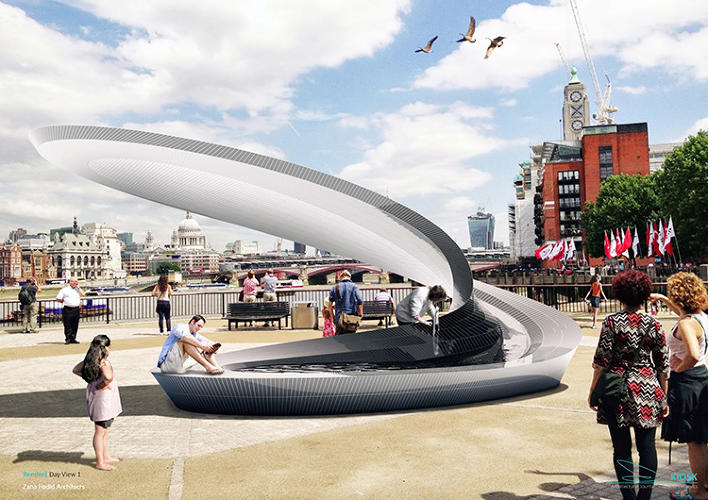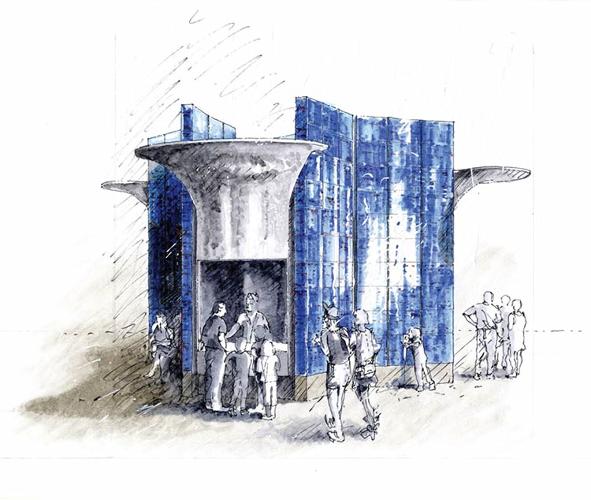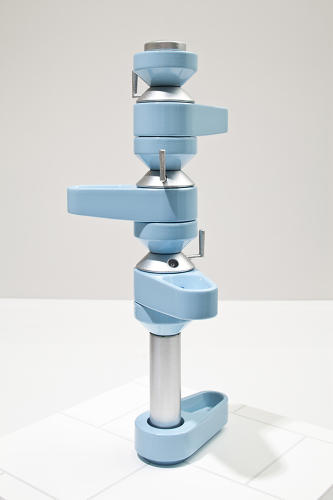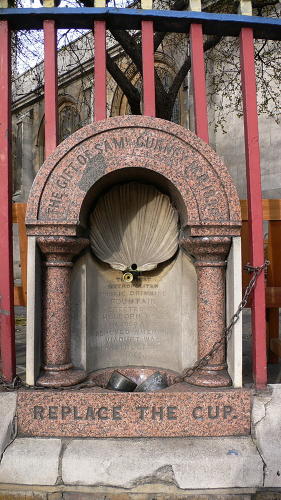People would rather pay two bucks for a sealed, clean drink than stoop over a dirty-looking public trough. Better design could help.
The city of London got its first public drinking fountain in 1859, built by the Metropolitan Free Drinking Fountain Association to provide safer water to a thirsty city, whose population largely had to rely on the contaminated Thames River.
From our partners:
An average of 7,000 people would sip from its spout, placed within a regal stone arch, each day. These days, with bottled water sold on every corner and fear of germs, water fountains have fallen out of favor, and no longer call for the same grand design as was once popular. The best you can usually hope for is a spigot that looks relatively clean.
British magazine Architects Journal and Turkishceramics, a group representing 34 ceramics brands in Turkey, asked some of London’s leading architects to come up with proposals for “a water-dispensing kiosk for London that incorporates ceramic details and reflects the artistry and craft typical of the building type’s rich heritage,” according to Rory Olcayto, acting editor of Architects Journal and creative director of the Kiosk challenge. Participants included Zaha Hadid Architects, Adam Architecture, Allford Hall Monaghan Morris, Eric Parry Architects, Hopkins Architects and Studio Weave. Despite the fact that the contest largely serves to advertise Turkish tile (representatives from each firm were brought to Istanbul to research the city’s elaborate fountain kiosks), it does pose a bigger question: Why shouldn’t we plop more beautiful water fountains onto our streets?
After all, one of the reasons water fountains have fallen out of favor is the wide availability and popularity of bottled water. People would rather pay two bucks for a sealed, clean drink than stoop over a dirty-looking public trough. Drinking fountains, though occasionally found tucked near the bathroom of a movie theater or a bookstore, are largely missing from our streets, and where you can find them, most often in public parks, they have a tendency to look decrepit.
But bottled water is, for a variety of reasons, terrible. Plastic bottle production wastes some 50 million barrels of oil per year, and millions of those plastic water bottles subsequently end up in landfills each year. Bottled water costs thousands of times more than tap water (it’s an $11.8 billion a year industry in the U.S.). And no, it’s probably not any safer for you than tap water.
A STARCHITECT-DESIGNED FOUNTAIN BEGS EVEN THE SNOOTIEST OF HYDRATION ENTHUSIASTS TO DITCH THEIR SMARTWATER.
The only real difference between municipal water and bottled is how it’s presented. Design matters in determining whether people perceive their water to be healthy, pure, and even trendy. Pepsi, for instance, a company that already bottles tap water as Aquafina, is rolling out a “premium” bottled water brand tentatively called Qua. It will be, like Aquafina, filtered tap water. The main difference? It comes in a snazzy, stylish bottle, so the company can get away with charging more for it.
That repackaging is not so different from what is happening in these proposals for high-design water fountains. The proposed designs may seem a little overwrought—there could not be a giant Zaha Hadid fountain on every corner—but their flourish implicitly suggests that drinking from a public fountain can be a high-class affair, too. A starchitect-designed fountain begs even the snootiest of hydration enthusiasts to ditch their Smartwater (hopefully in the nearest recycling bin) for the tap.
Furthermore, the benefits of making water more accessible and appealing aren’t limited to those who can afford a fancy bottle (although those would be the people most in need of extra encouragement to sip from a public spout). Olcayto presents the challenge as one intended to “stimulate debate about the meaning of public space, ideas around congregation and a return to a more civic realm where items, such as drinking fountains and other architectural civic gestures, change how we use and view our townscapes.” A flashy fountain is clearly meant to be enjoyed, creating a pocket of the city where people (and in some designs, their dogs) are encouraged to stop, refresh, and enjoy the civic scenery, for free. Most importantly, no plastic bottles required.
This feature originally appeared in FastCoDesign.











